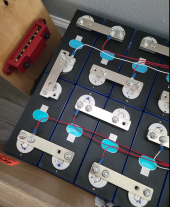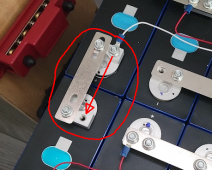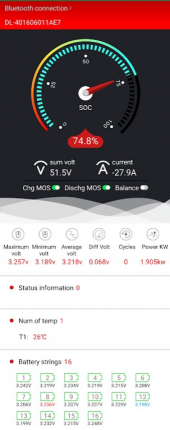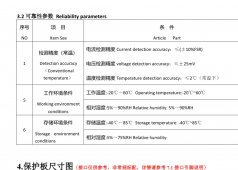I have a 48V 16S pack oriented with cells 1-8 (top/right) and 9-16 (bottom/left). Cells 8 and 9 are connected by a perpendicular bus bar that doesn't make full contact with the cell terminals. I would like to know if I should get a custom bus bar to make full contact with the cell terminals. I'm not sure if this inconsistency can lead to an increase in imbalance amongst the cells. Quick example: with just a 25A load the cell voltage difference can be greater than 0.25V across cells 8 and 9. This was tripping my cell voltage difference protection and making me scratch my head at first as to why my battery was shutting down (Daly BMS did not log or show this was the cause of disabling discharge).
2 questions:
1. Would this perpendicular bus bar be the cause of this voltage imbalance? Cells were top balanced to 3.65V. Stopped balancing when the cells reached 40mA of current and the cells read 3.646V.
2. Would making a custom bus bar that makes full contact with the cell terminals result in more even discharge of these cells?
Thanks All!

2 questions:
1. Would this perpendicular bus bar be the cause of this voltage imbalance? Cells were top balanced to 3.65V. Stopped balancing when the cells reached 40mA of current and the cells read 3.646V.
2. Would making a custom bus bar that makes full contact with the cell terminals result in more even discharge of these cells?
Thanks All!






